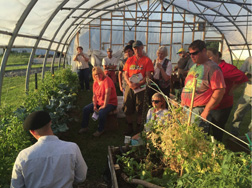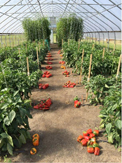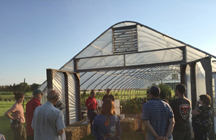
Chazy-Peru, NY. Northern New York growers can apple pest identification research to good use this spring as they scout their orchards for troublesome insects.
Grants from the farmer-driven Northern New York Agricultural Development Program (NNYADP) funded collaboration by Cornell University faculty and laboratory personnel and Cornell Cooperative Extension educators to scout regional orchards, identify apple pests, and enter real-time data into computer models to help growers more precisely target their orchard applications.
Additionally, this project included orchard-based demonstrations that revitalized grower interest in integrated pest management.
In 2015, 2016, and 2017, trap catch data from the Northern New York scouting missions was sent weekly through Eastern New York Commercial Horticultural Program e-alerts to growers on the activity of key pests at commercial apple orchards in Chazy and Peru, NY. Growers received season-specific information to guide their response to pests such as oriental fruit moth, codling moth, and obliquebanded leafrollers.
In 2017, the research team used the infrastructure put in place by the project the year before to help growers stay alert to fire blight that occurred at an unprecedented epidemic level in the Champlain Valley in 2016. Very few new infections were reported in 2017, and of those reported several were identified as false alarms. In orchards where it was present, growers effectively managed the bacterial disease that destroys apple blossoms, shoots, and, sometimes, entire trees.
Researchers are compiling a Northern New York apple pest database to document pest trends over time.
Recent apple research reports are posted under the Horticulture tab on the Northern New York Agricultural Development Program website at www.nnyagdev.org. The 2017 key pests report is posted here.
Funding for the Northern New York Agricultural Development Program is supported by the New York State Senate and administered by the New York State Department of Agriculture and Markets.
The results of past projects funded through the Northern New York Agricultural Development Program are posted on this website.
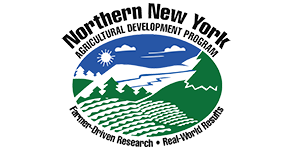 NNYADP-Funded Research Shows How to Boost Spring Hay Harvest in Northern NY
NNYADP-Funded Research Shows How to Boost Spring Hay Harvest in Northern NY
 The farm labor evaluation is one of four dairy-focused projects with Northern New York Agricultural Development Program (NNYADP) funding in 2018; the other three are evaluating opportunities to increase milking parlor efficiency, enhance calf health, and help milking cows adjust to hot weather conditions.
The farm labor evaluation is one of four dairy-focused projects with Northern New York Agricultural Development Program (NNYADP) funding in 2018; the other three are evaluating opportunities to increase milking parlor efficiency, enhance calf health, and help milking cows adjust to hot weather conditions. Thirteen projects receiving NNYADP grants are designed to benefit field crop production, including through the use of yield monitoring technology to more accurately project corn yield potential and through the commercial-scale farm application of Cornell Soil Health assessment testing.
Thirteen projects receiving NNYADP grants are designed to benefit field crop production, including through the use of yield monitoring technology to more accurately project corn yield potential and through the commercial-scale farm application of Cornell Soil Health assessment testing.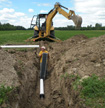 Two additional NNYADP-funded agricultural stewardship research projects are focused on the opportunity of tile drainage to improve both crop production and environmental conservation.
Two additional NNYADP-funded agricultural stewardship research projects are focused on the opportunity of tile drainage to improve both crop production and environmental conservation. With a new NNYADP grant for research in 2018-19, Cornell Maple Program specialists are measuring how the timing of tapping schedules by NNY maple producers impacts maple and birch sap yields.
With a new NNYADP grant for research in 2018-19, Cornell Maple Program specialists are measuring how the timing of tapping schedules by NNY maple producers impacts maple and birch sap yields.